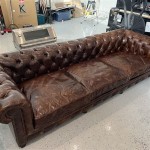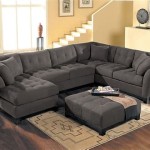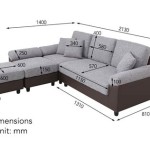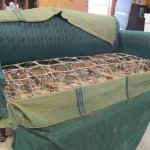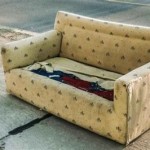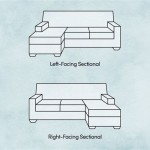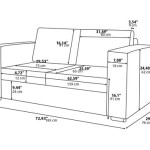DIY Mah Jong Sofa: A Guide to Transforming Tiles into Furniture
The iconic imagery of mah jong tiles, with their intricate designs and distinct colors, lends itself to a variety of creative applications beyond the game itself. Repurposing these tiles into furniture, especially a sofa, presents a unique opportunity to blend functionality with artistic expression. This guide explores the process of creating a DIY mah jong sofa, covering essential aspects from material selection to assembly techniques.
The core component of a mah jong sofa project is, naturally, the mah jong tiles themselves. Vintage tiles, while potentially more aesthetically appealing, can be brittle and difficult to work with. Modern sets, often made of more durable materials like melamine or acrylic, offer greater structural integrity. The quantity required will depend on the desired sofa dimensions and the tile arrangement pattern. Estimating approximately 100-200 tiles per square foot of sofa surface area provides a starting point, with additional tiles recommended for breakage or design adjustments.
Beyond the tiles, the sofa's structural foundation necessitates careful consideration. A sturdy wooden frame, constructed from lumber like 2x4s or 4x4s, forms the base. The frame design should reflect the intended sofa shape and size, incorporating supporting beams and cross braces for stability. Plywood sheets, cut to fit the frame dimensions, provide a surface for tile attachment. The thickness of the plywood should be sufficient to bear the combined weight of the tiles and intended users, typically ranging from ¾ inch to 1 inch.
Selecting an appropriate adhesive is crucial for securely affixing the mah jong tiles to the plywood. Construction-grade adhesives, such as high-strength epoxy or specialized tile adhesives, offer robust bonding capabilities. These adhesives should be chosen based on their compatibility with both the tile material and the plywood. Testing the adhesive on a small, inconspicuous area is recommended to ensure proper adhesion and prevent undesirable reactions.
Prior to tile application, meticulous surface preparation is essential. The plywood surface should be thoroughly cleaned and sanded to ensure a smooth and even surface for optimal adhesion. Any imperfections or irregularities in the plywood can compromise the structural integrity and aesthetic appeal of the finished sofa. Applying a primer coat to the plywood can further enhance adhesion and provide a uniform base for tile application.
The arrangement of mah jong tiles presents an opportunity for creative expression. Tiles can be arranged in repeating patterns, symmetrical designs, or even represent specific hands or combinations from the game. Planning the layout in advance, potentially using graph paper or digital design software, can prevent errors and ensure a cohesive aesthetic. During application, spacers, such as small plastic crosses or toothpicks, can maintain consistent grout lines between tiles.
Once the adhesive has cured according to the manufacturer's instructions, grouting fills the spaces between the tiles, providing further structural support and enhancing the sofa's aesthetic. Grout selection should consider color compatibility with the chosen tiles. Unsanded grout is typically preferred for narrow grout lines, while sanded grout is suitable for wider gaps. Applying the grout using a grout float ensures even distribution and complete filling of the spaces. Excess grout should be removed promptly with a damp sponge before it hardens.
After the grout has completely dried, sealing the grout lines with a grout sealer protects against staining and moisture damage. This step is particularly important for sofas intended for high-traffic areas or environments prone to spills. Selecting a sealer appropriate for the chosen grout type ensures optimal performance and longevity.
Adding cushions enhances the sofa's comfort and functionality. Custom-made cushions can be designed to complement the sofa's dimensions and aesthetic. Choosing durable and comfortable upholstery fabrics, such as high-density foam and stain-resistant covers, ensures both practicality and visual appeal. The cushion design can incorporate elements that echo the mah jong tile design, creating a cohesive and visually engaging piece of furniture.
Constructing a DIY mah jong sofa requires careful planning, meticulous execution, and a dedication to detail. The process involves multiple stages, from material selection and frame construction to tile arrangement and grouting. Adhering to proper techniques and utilizing appropriate materials ensures the creation of a durable, functional, and visually stunning piece of furniture that showcases both craftsmanship and appreciation for the artistry of mah jong tiles.

Mah Jong Sofa Vs Budget One Don T Cramp My Style

Pin On Upholstery Sofa

Pin On Kanape

Pin On Interiors

Buy Mah Jong Compositionethnic Room Set Home Decoration Floor In

Buy Bohemian Design Oriental Floor Seating Ethnic Sofa Arabic In

Buy Bohemian Design Ethnic Sofamodern Sofa Mah Jong In


Postmodern Mah Jong Modular Sofa In Missoni Keo By Hans Hopfer For Roche Bobois France 2000s Set Of 11 At Pamono

Pin On Decoration Art

